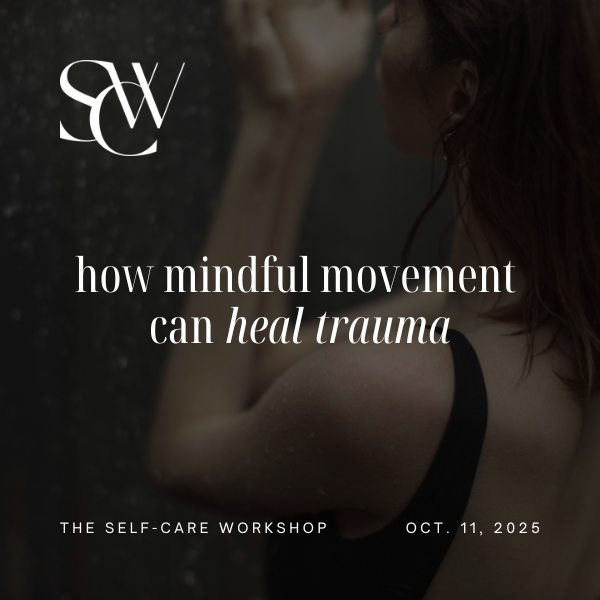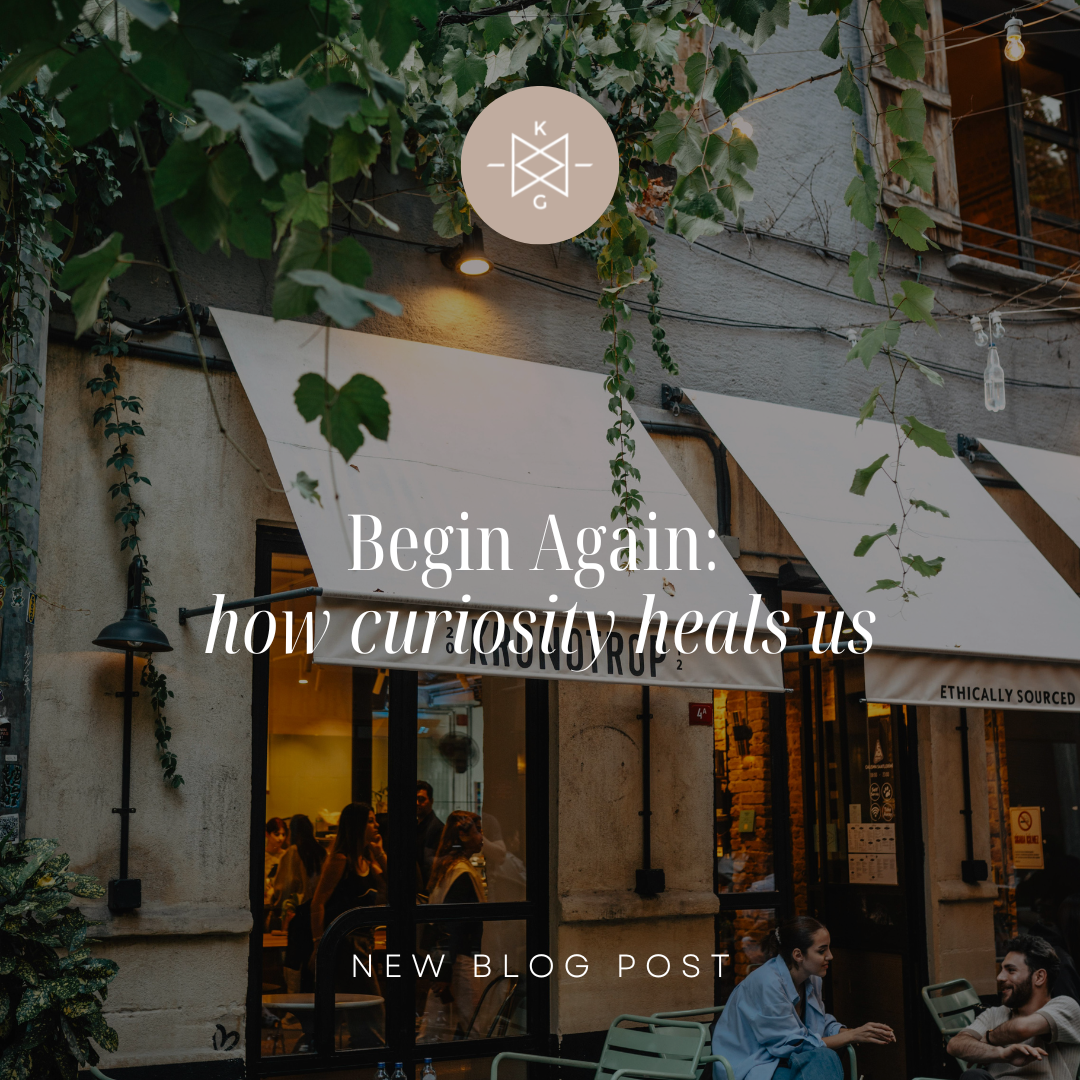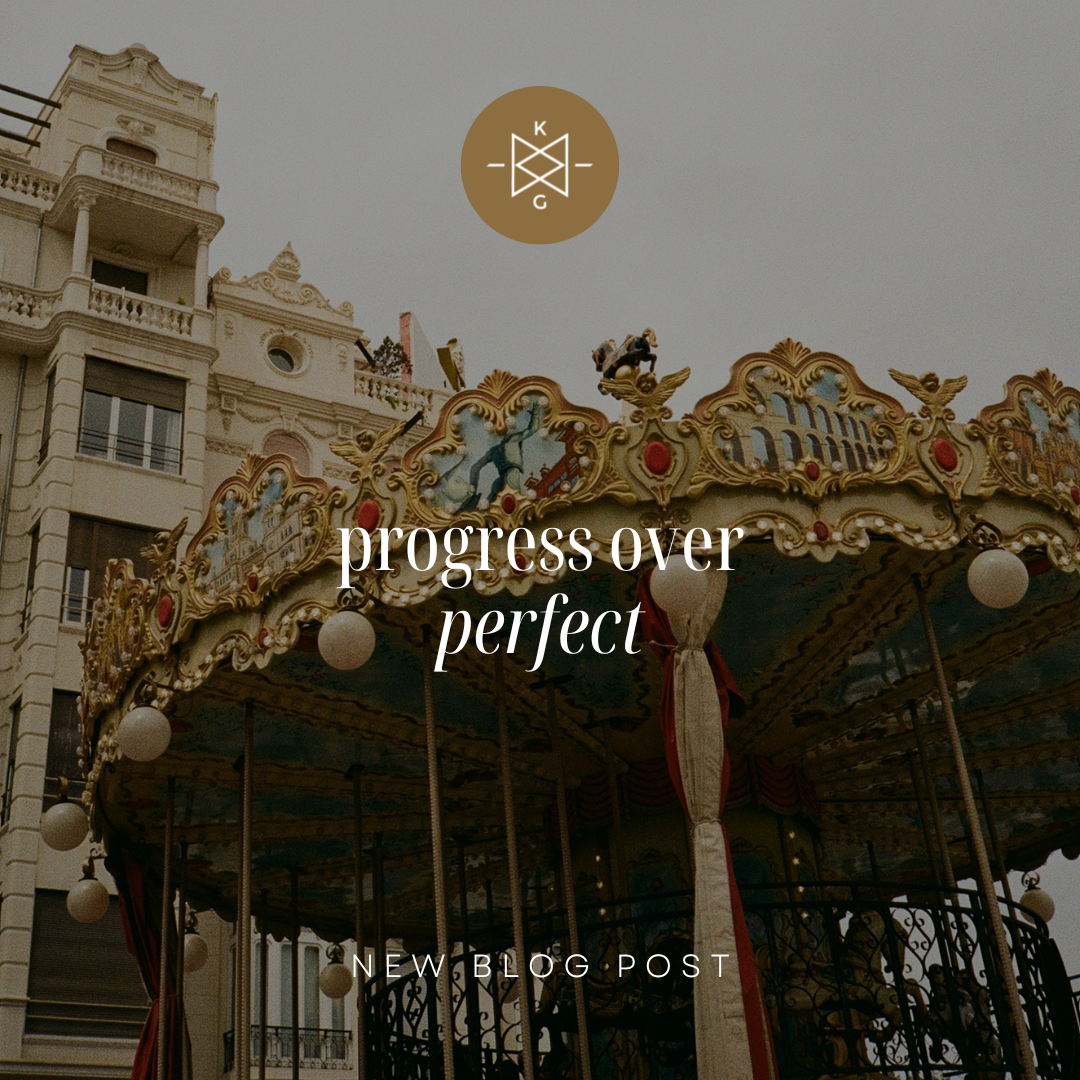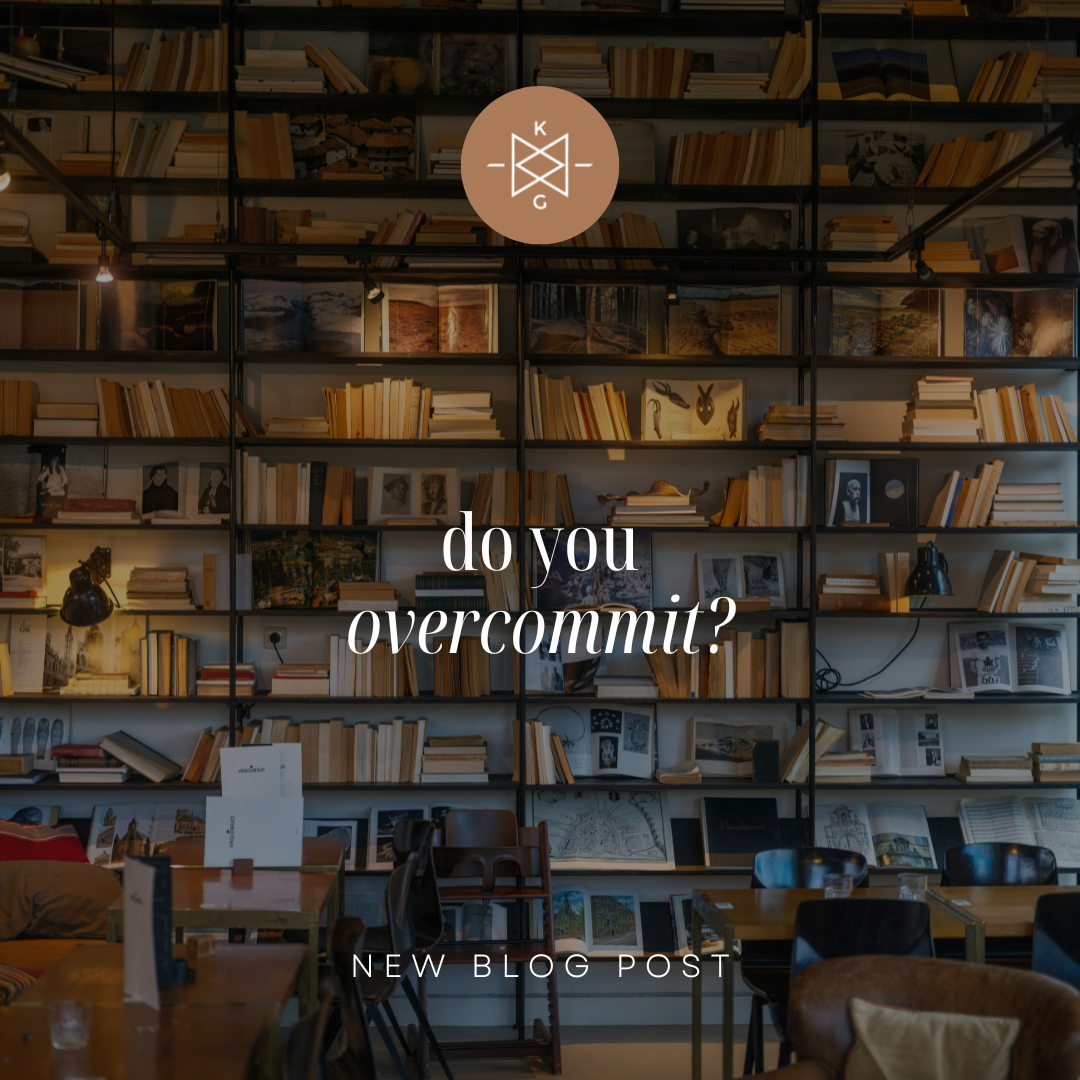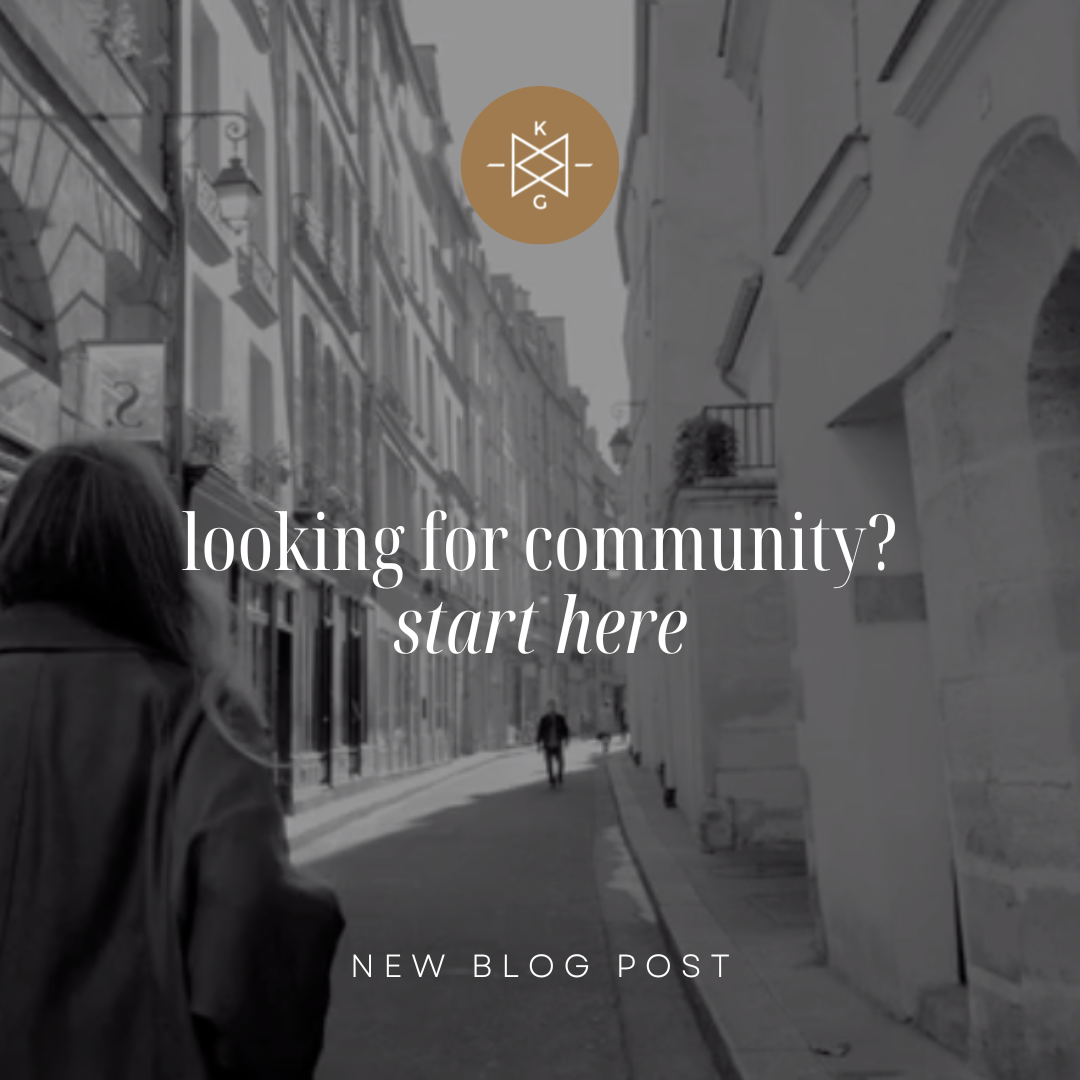
The Blog
Recently Featured
All Blogs
I Wish I Had Known This at 25
“Where we think we need more self-discipline, we usually need more self-love.”
- Tara Mohr
What piece of advice would you give your 25-year-old self? Sure, she may not have listened, but like any loving parent, you do what you can to steer your children in the right direction. That headstrong seeker was only doing her best. And yet today, you have matured into the expansive space of perspective and more balance. I know you have a lot to offer your younger, stubborn self.
Me? I would have a spirited come-to-Jesus about how to relax into the unknown, one brave and wobbly step at a time. I’d tell her that having all the answers isn’t half as important as asking honest questions.
Specifically, I’d love for her to understand what it means to have a growth mindset as opposed to a fixed one—less either-or and more both-and.
As a recovering perfectionist, I’ve been all too familiar with what it means to have a fixed mindset—you know, the way of thinking that is rigid and narrow. It’s all about pass or fail, win or lose, good or bad, black and white. It’s rooted in judgment rather than curiosity. It’s refusing to take myself on a brisk 20-minute walk because I didn’t have enough time to do my hour-long high-intensity workout.
Here’s another example. You have your six-month review at work. Your boss gives you high marks in several areas but points out one specific necessary improvement in your performance on a big project. A fixed mindset self-criticizes, labeling your performance as a failure. A fixed mindset disregards the praise and zeros in on the area of improvement. A growth mindset celebrates the positive feedback and understands the value of constructive criticism for future success. A growth mindset sees life as a slew of peaks and valleys all leading to necessary learning and expansion. It looks at life as an experiment, not a performance.
A growth mindset is the petri dish that breeds resilience. A fixed approach creates inflexibility, closing us off from abundance and opportunity.
This isn’t about glossing over reality. It’s about softening your approach to the inevitable ebbs and flows of life and enjoying yourself a bit more along the way.
Spend some time this week pondering this:
What area of your life could you stand to soften into? Is it your relationship with food, your body, parenting, or work? Is it your self-care? Whatever it may be, I believe a great way to find out is to pay attention to our self-talk, that often nagging inner critic that rages on involuntarily.
Write it all down.
I love what Tara Mohr says: “Where we think we need more self-discipline, we usually need more self-love.”
Better is Best: Say Goodbye to Perfectionism
“Perfectionism is the voice of the oppressor, the enemy of the people. It will keep you cramped and insane your whole life.”
-Anne Lamott
Raise your hand if you’ve ever struggled with perfectionism. Though I can’t see you right now, I have a hunch that most of you have your hands up, either literally or figuratively in your heart where no one else can see you. Perhaps you’re wondering if there are bigger problems than perfectionism at stake. Oh, I’ve got your number, I’m a recovering perfectionist.
Perfection is so illusive, yet so tempting, especially for all you creative, high-achievers out there. It’s a vain and futile attempt to attain the unattainable.
And guess what?
It’s impossible. Perfectionism is an overt, egoic striving to fill a covert, bleeding insecurity. If we’re really honest, perfection is just a scared man’s game.
I write these words with emboldened authority only because I’ve had a lifelong, toxic relationship with perfectionism. I don’t know the magic potion I sipped on so early in life to fuel the flame, but boy was it potent. I’ve been incredibly judgy and hard on myself from day one.
As a complex and sensitive kid (read: dramatic), being understood and well-received always took precedence. Acceptance, personal significance, and value were—and still are— my drug. I know, classic Enneagram four move!
The temptation is always: “I’m doing pretty good, but something’s missing.” This kind of thinking has kept me double bound in the fetal position of literal and figurative dark corners in life many times.
Anne Lamott is spot on when she says, “Perfectionism is the voice of the oppressor, the enemy of the people. It will keep you cramped and insane your whole life.”
For creatives especially, this phenomenon is mass genocide. I believe this is because ideas and concepts are birthed in our thinking mind, which can be an absolutely lovely place to be. We have a brilliant idea for a lyric, a new workflow, a painting, a proposal, and we run with it, executing it immediately and seamlessly, right? Bam…so easy.
Wrong. My experience as a writer and working with other creatives is this: that brilliant little idea gets locked up in the thinking mind, stewing and marinating in all kinds of saucy possibilities and grandeur, so much so that it never even sees the light of day.
Our minds are meant to be the sacred birthplace of ideas. Our minds were not meant to indefinitely house them, ultimately squeezing the life and breath out with quenching fumes of perfectionism. Social media doesn’t make this pursuit any easier as we get caught up in comparison games with people we don’t even know posting highlight reels from their otherwise normal life.
This can lead to such worthlessness and defeat, we either want to numb out somehow (drugs, booze, sex, shopping, busyness, work, what have you) or we abandon our creative calling altogether. This is around the time therapy sounds like a promising option.
David Foster Wallace said it this way, “Perfectionism is very dangerous. Because of course if your fidelity to perfectionism is too high, you never do anything.”
I suspect you want to do great things: to be seen, known, and truly loved. I do too. The only problem is, this requires tons of courage…and vulnerability. Perfectionism doesn’t leave much room for them.
What if we could aim for better instead of perfect? To slowly build on the baby steps of gradual improvement...choosing the next best thing? This type of growth mindset leaves room for the successes, the failures, and the stalls. Best of all, you hold the keys to your life, not some illusive, phony version of you.
This week, what would it look like to choose better over perfect?
Love & Gratitude,
Katie
P.S. There's still time to join me, Kuola, and Ally at our Self-Care Workshop on February 8-9 in Nashville. Sign-up today!
Say Yes to the Scale (not what you think)
“Argue for your limitations and you get to keep them.”
-Elizabeth Gilbert
I’m not a huge fan of the scale in my bathroom. In fact, I bought a new scale for the first time in ages when I found out I was pregnant last February. For the first time, I found it a bit thrilling (if not bizarre) to experience my body changing and growing as it housed my now four-month-old son, Tucker. I mean, when else do we as women feel totally empowered to see that number increase?
Today, I’m not talking about numbers or that kind of scale. This is not about how to lose unwanted weight you may have picked up over the holidays. No, this is not that blog.
There’s another scale I believe to be far more impactful to your health and interestingly enough, has better metrics than the one in your bathroom. In fact, it won’t only help you feel better physically, but emotionally and spiritually as well.
Oh, and one more thing, it’s totally free and portable.
Backstory:
I’ve spent my whole adult life in the pursuit of wholeness—integration, looking to find the solution to my own brokenness and ongoing battle with depression/anxiety. That was my story for a long time. I let the pain of sadness and victimhood define me while concurrently searching for something “out there” that would solve the problems “in here.”
Perhaps you identify with my journey.
When I didn’t find what I was looking for (queue U2 “Still haven’t found what I’m looking for”), I decided I needed a different approach. This quest proved to me that happiness is, indeed, an inside job, one that is more spiritual than circumstantial. By spiritual, I mean the capacity inside each one of us to be receptive and open to something greater than us...something really good.
After all, numbers on a weight scale constantly fluctuate and even when they give you a sliver of relief, that relief is only temporary and can crumble with life’s inevitable challenges just hours later at lunchtime.
What is this transformational work that can heal us from the inside-out?
It’s thought work, specifically, our thought scale. And yep, you’ve already got one, you may not be aware of it though.
It’s been proven that we have the power to change our lives and circumstance just by changing our thoughts. Why? Because every single thought you think creates an emotion in your body which results in corresponding behavior. These behaviors, over time, build out your life.
If I entertain self-defeating thoughts all day long, those thoughts produce low-frequency emotions such as fear, hurt, victimization, and on the lowest end of that scale, apathy. As a result, my actions that follow correspond with those emotions. When I’m consciously aware of my thoughts, and choosing ones that are life-giving as opposed to limiting, the domino effect that creates in my physical experience is tangibly better than when I’m stuck in a pity party.
Don’t worry, this is not about getting it perfect, it’s about becoming aware of your thoughts and practicing a higher quality within them.
For example, it’s moving up the thought scale from, “There’s never enough time to do what I need to do” to “I’m giving myself grace to do my best right now.” (One I am constantly coming back to as I transition into motherhood!)
We don’t have control over all of our circumstances in life. We do, however, have control of how we think about our circumstances. This matters big time.
This week, I want you to play around with (a) becoming aware of your thoughts as you have them, and (b) practicing tiny shifts up the thought scale in order to help you feel better emotionally and physically. It’s subtle, so don’t go looking for a quick fix here.
Are you ready to shed the weight of your nagging inner critic. She’s heavy. What thoughts promote willingness and curiosity in your life today?
Love & Gratitude,
Katie
P.S. There's still time to join me, Kuola, and Ally at our Self-Care Workshop on February 8-9 in Nashville. Sign-up today!
Extreme much? Here's another way...
"Our Western dualistic minds do not process paradoxes very well. Without a contemplative mind, we do not know how to hold creative tensions. We are better at rushing to judgment and demanding a complete resolution to things before we have learned what they have to teach us."
- Richard Rohr
I remember sitting in my therapist’s office several years ago (probably twelve). Gail was her name and she’s everything a brilliant therapist is in my mind: accepting, compassionate, wise, firm, seasoned by her own broken story, and the kind of listener that makes you feel like you’re the only soul on the planet.
I was in the chapter of my life I refer to as the “falling” stage. Everything around me seemed to be crumbling and my job was to let it do so against every ounce of my will. She held the sacred space for that painful season to unfold. At every break, she simply wanted to better understand me, not try to fix me. Gail saw me.
Have you ever been in that frustrating place where the best and safest thing to do is NOT break the fall? I’ve often heard this with surfing and skydiving, for example (two pastimes I have zero experience with). In my understanding, there are actual ways we must learn to fall—to lean into the plummet.
Resisting with tension, grit, and that secret stash of Xanax bars you snaked from your mama’s medicine cabinet aren’t included.
Gail patiently taught me how to fall, over time. Something she said to me one day, in the vortex of my despair was, “Katie, it doesn’t have to look a certain way. You get to choose.”
Those words stuck with me perhaps more than anything else she ever said. Funny how that works isn’t it? We usually remember much more poignantly how people make us feel, not necessarily what they say. However, these are some of the few words still glued on.
Much of my struggle was existing in a world of extremes—all-or-nothing thinking—you know, “either-or.” Either I would be alone and depressed my whole life with little hope for anything or I’d be Miss Perfect: married with kids, a clear cut path forward, an enviable career, oh, and liked by all.
Looking back, I’m so grateful that zipped up idea of success stayed just that, an idea.
Falling for me meant moving from this dualistic, binary brand of extremes and living into the open relief that life, in fact, didn’t have to look a certain way. It could be the messy middle, or, the “both-and.”
I could feel striking depression and understand that hope was available. I could feel lonely, longing for relationship and community and know that it very well may look different in several weeks time. I could long for certainty and lean into the unknown. Richard Rohr calls it “holding creative tensions.”
Holding the tension between a longing and its unmet fulfillment is indeed a creative, tight space. It looks a whole lot like faith.
Does your extreme thinking feel exhausting? Do you find yourself awfulizing situations by projecting worst-case scenarios onto perfectly neutral possibilities? If so, I feel you. It’s a relentless crapshoot.
I believe that old way of “either-or” is how we learned as kids to make sense of the world growing up. However, as adults that rigid mindset needs some revising. What if we could practice a softer, more curious approach?
Next time you get stuck in either-or thinking, simply notice it, honor it, and let it be. Then ask yourself what you’re needing in the moment. Is it hope, acceptance, a friend, time, or provision?
Find the space in that very moment that allows for the lack as well as the possibility. “I’m overwhelmed with deadlines, and, I know there is light at the end of the tunnel.” Or “I’m so angry with my friend and how she’s treating me, and, she may be really struggling right now.”
Let’s lean into the contemplative, creative space that invites more possibility, yes?
Love & Gratitude,
Katie
Can I get a Witness? (How to get out of your own way)
“Between the stimulus and the response there is a space. In that space, there lies your freedom and power.”
- Victor Frankl
Have you ever felt like you’re your own worst enemy? If you could only get out of your own way, life might be a lot easier?
Me too. I often feel I wrote the book on self-sabotage.
I’ll never forget sitting in my old therapists office about eight years ago and hearing the strangest homework assignment I’d ever gotten to date. Here’s what he said,
“Katie, I want you to spend the whole week simply being a student of you and your experience.”
“Excuse me?” I thought to myself as I quizzically stared back at him like he had eight heads. This would be interesting…
This seemed nearly impossible at the time because I’d become so accustomed to ruthlessly judging myself without even noticing. To merely “observe” or “witness” my daily experience would require me to slow down that automatic self-criticism. It would require me to be a neutral audience. This in turn, would require me to be a bit…kind?
It was perhaps the most profound assignment I’d ever been given. I felt as if a heavy weight had been lifted from my weary frame. I remember feeling curious, even intrigued by myself and my behaviors. Miraculously, I’ve never done drugs before, but this little experiment felt as close as I’d gotten up until that point. It was out-of-body.
Part of my lifelong work has been learning to grow that neutral observer, or inner witness, inside that allows for self-awareness and compassion to take root and grow over time. The more curious we can get about anything, the less time we spend in rigid judgment. As a result, we move from a fixed mindset to a growth one. Otherwise, we live in reaction mode, constantly being triggered and judging ourselves and others. Not a good look.
Here’s two things I’ve learned about human nature:
99.999999% of us have a pretty nasty inner critic at some point along the way. Human beings, by nature, have a negative bias. As the saying goes, “we are our own worst critic.”
It’s much easier to react out of emotion than respond out of self-awareness.
I also believe you are your absolute greatest asset in this life. However, in order to be MVP on your own team, you may need to clean out the dank and dusty attic of your thoughts, like I constantly do.
I’d like to support you in this truly life-giving process. Consider this first step the warm-up of our spring training. Here’s how we’ll get the blood pumping:
Assume the role of a neutral observer, a student if you will. Pretend you’re doing research for a project and any and every bit of information is fair game. It’s okay if you bounce back into the judgment seat. That’s good information too! Record your findings with this journaling prompt:
What do I noticing about myself and my experience? How can I be more curious throughout the day?
Email me your findings! I’d love to learn from you and share your wisdom on Instagram next week.
If you get discouraged along the way, take heart. In a science experiment, everything is good information, even failure. And remember, you are the ultimate expert at you.
Love & Gratitude,
Katie
